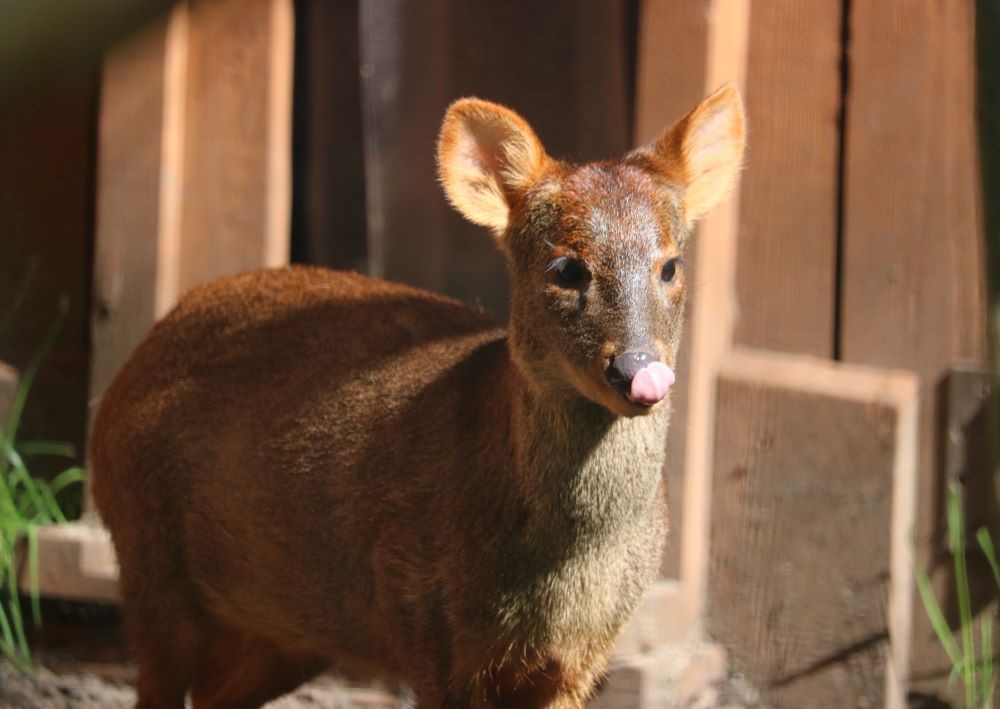Southern Pudu
PUDU PUDA

HABITAT
Temperate forests and scrubland
GEOGRAPHIC REGION AND RANGE
Southern Chile and south-western Argentina.
DIET
Herbivore – Leaves, fruit, bark, flowers, and seeds
PHYSICAL DESCRIPTION
Short reddish-brown fur, males have simple spike antlers, and the young have white spots.
LIFESPAN
Natural Habitat: 10 years on average
Under Human Care: 15-17 years
THREATS
Pudu are under threat from habitat destruction from timber and agriculture deforestation, being hunted for food and being taken from the wild to be sold as pets. Over 90% of former pudu habitat in Chile has been lost. Also, loose dogs often hunt and kill pudu and people hunt them for meat. It’s believed there are fewer than 10,000 southern pudu in the wild, and there are less than 200 in zoos around the world.
STATUS
Near Threatened
FUN FACTS
At 15-30 pounds, the southern pudu is the second smallest deer species! The only smaller species is a close relative, the northern pudu, which only weighs about 7 to 14 pounds!
Like other deer, male southern pudu will grow and shed their antlers every year. These antlers grow to be about 3 inches long.
Like many deer, southern pudu fawns have white spots when they are born, but they fade after a few months.
What are AZA Zoos doing for Southern Pudu?
Their zoo population is managed through conservation breeding programs called Species Survival Plan programs, which ensures genetic diversity and species health. While southern pudu are not currently endangered, they do face some threats in their natural habitats which include the loss of their habitat due to logging and agriculture, and poaching for the pet trade. AZA zoos are working to maintain a long-term, genetically valuable population of southern pudu through their SSP program.
PUDU NEWS
LEARN MORE
